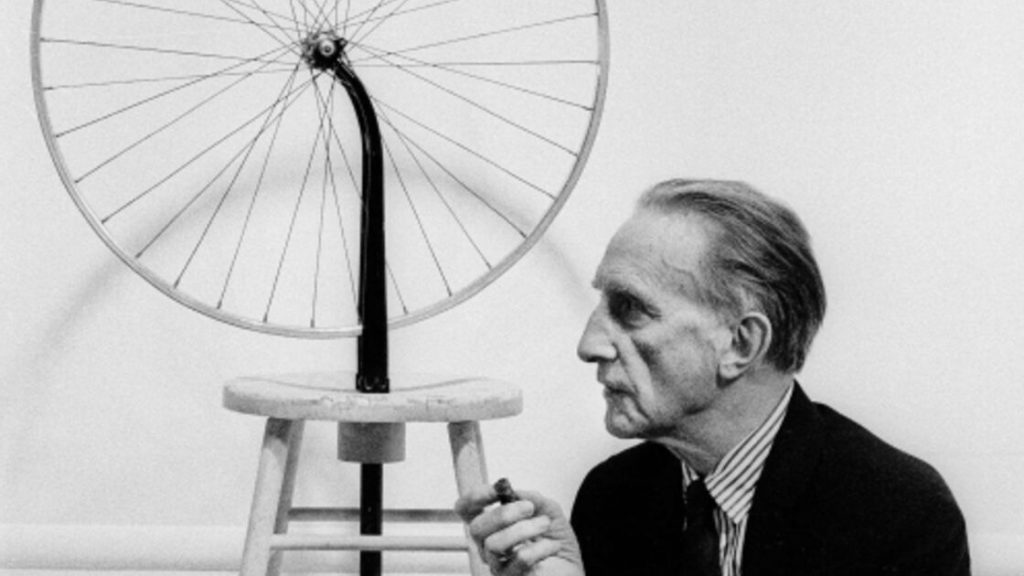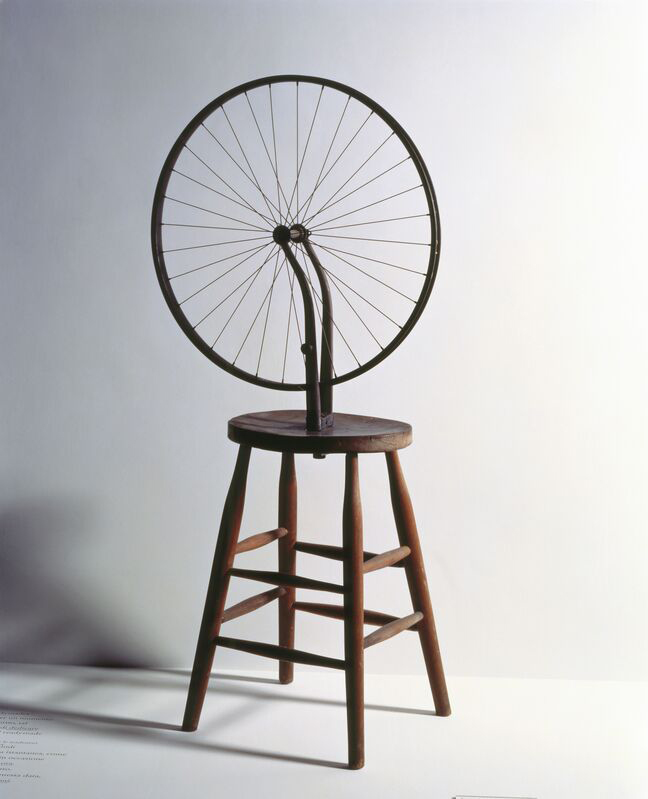Introduction

Duchamp bicycle wheel is considered the beginning of Duchamp’s revolutionary ‘ready-made’ art. However, when he finished this work in his studio in Paris, he didn’t know how to name it. He later said, “I had a wonderful idea of fixing the bicycle wheel on a kitchen stool and watching it turn.” It wasn’t until 1915 when he went to New York and came into contact with the city’s vast industrial products that he came up with the term ‘ready made’. More importantly, he began to realize that in the industrial age, making art through traditional handicrafts seemed meaningless. He proposed that since widely available manufactured goods are capable of performing the job, why bother making artworks? For Duchamp, the concept behind art is more important than how it is made. This concept, perhaps the first true example of conceptual art, will completely change the history of art in the future. However, like an ordinary household item, the original bicycle wheel has not been preserved: this version is actually a replica from 1951.
Duchamp’s ready-made art
Revolutionary creative approach
Duchamp’s ready-made art was a disruptive revolution in the history of art in the 20th century. He broke the traditional way of artistic creation and elevated ordinary objects to artworks. The bicycle wheel is the beginning of this new trend, marking a significant shift in artistic concepts.
Creation of bicycle wheels
The creation of Duchamp bicycle wheel is not smooth sailing. When Duchamp first fixed his bicycle wheel on a kitchen stool and watched it spin, he did not foresee it becoming a work of art. This behavior is purely out of curiosity and entertainment. It was not until he went to New York and was influenced by the industrial production of goods that he began to contemplate the potential significance of this work.
Art and Industrial Era
The experience in New York made Duchamp begin to doubt the artistic creation methods of traditional handicrafts. He believes that in the industrial age, the traditional methods of artists creating artworks became meaningless. In contrast, he began to view ready-made products as potential artistic materials because they were products of industrial production and had wide availability.
The concept of “ready to use” art

The Importance of Concepts
Duchamp’s key point is that the creativity and concept of art are far more important than the production process. He emphasized the ideas and concepts of art, rather than traditional techniques and techniques. This viewpoint had a profound impact on the later conceptual art movement.
The Transformation of Art
Duchamp’s “ready-made” art marks a significant transformation in the history of art. It challenges traditional aesthetic concepts and redefines the essence of art. Art is no longer limited to beauty and handicraft, it can be a thought, an idea, or a statement.
A replica of a bicycle wheel
The disappearance of the original work
The original work of Duchamp bicycle wheel did not survive, it disappeared in history. However, the concept and importance of bicycle wheels have been widely recognized in art history. The version displayed here is a replica from 1951, made based on Duchamp’s original ideas and descriptions.
Impact and Heritage

The Rise of Conceptual Art
Duchamp’s “ready-made” art paved the way for the rise of conceptual art. It inspires artists to rethink the definition of art, emphasizing the importance of ideas and concepts. This concept had a profound impact on art in the second half of the 20th century.
The fusion of art and real life
Duchamp’s works closely connect art with real life. He emphasized the close relationship between art and daily life by elevating everyday objects into artworks, which had an impact on later postmodern art.
Epilogue
Duchamp bicycle wheel represents a revolution in the history of modern art. It marks a shift in artistic concepts from traditional handicraft creation to the importance of concepts and ideas. This work challenges traditional aesthetic concepts and redefines the essence of art. Duchamp’s “ready-made” art will continue to influence artists and audiences, opening up new possibilities for the future of art.

